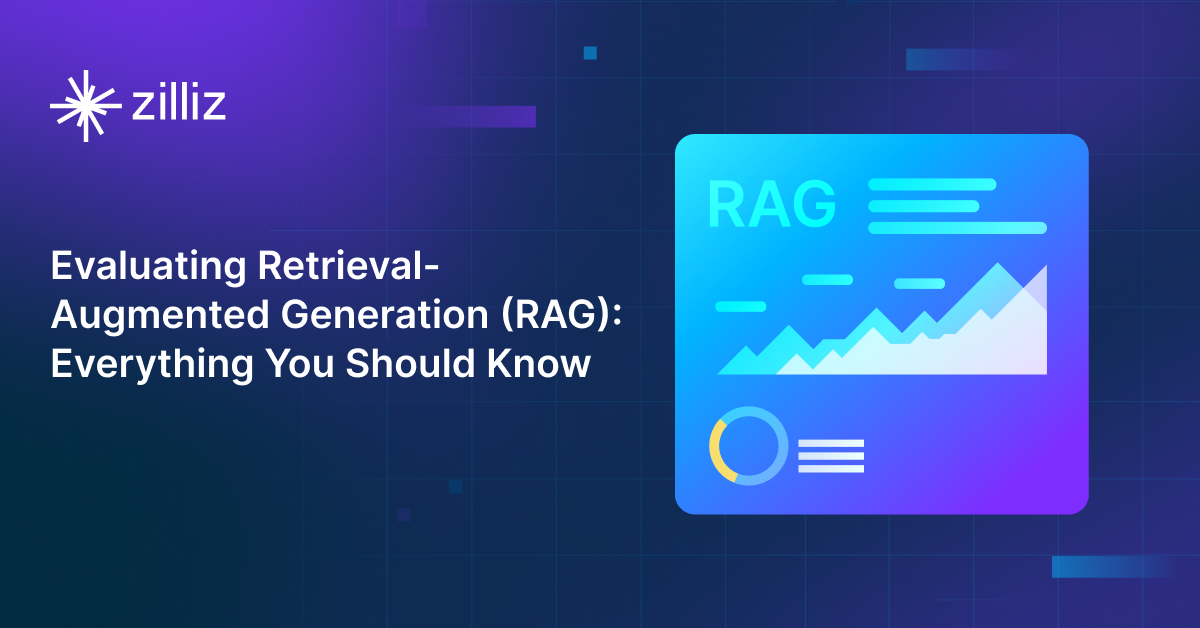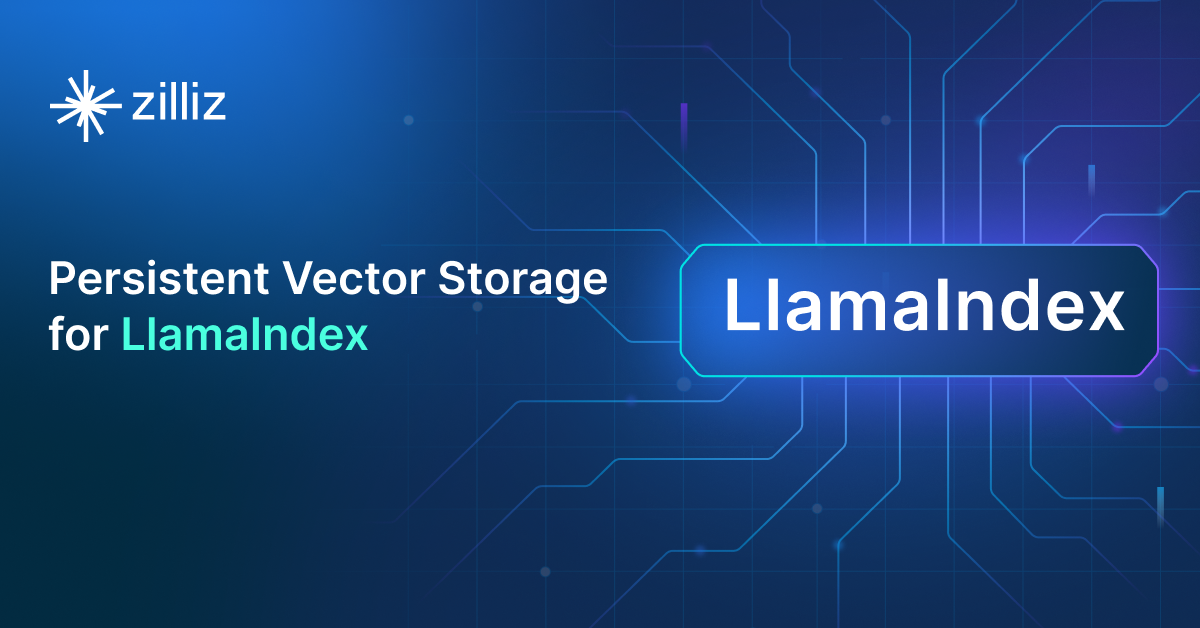Build RAG Chatbot with LangChain, Zilliz Cloud, Google Vertex AI Claude 3.7 Sonnet, and Google Vertex AI textembedding-gecko@003
Introduction to RAG
Retrieval-Augmented Generation (RAG) is a game-changer for GenAI applications, especially in conversational AI. It combines the power of pre-trained large language models (LLMs) like OpenAI’s GPT with external knowledge sources stored in vector databases such as Milvus and Zilliz Cloud, allowing for more accurate, contextually relevant, and up-to-date response generation. A RAG pipeline usually consists of four basic components: a vector database, an embedding model, an LLM, and a framework.
Key Components We'll Use for This RAG Chatbot
This tutorial shows you how to build a simple RAG chatbot in Python using the following components:
- LangChain: An open-source framework that helps you orchestrate the interaction between LLMs, vector stores, embedding models, etc, making it easier to integrate a RAG pipeline.
- Zilliz Cloud: a fully managed vector database-as-a-service platform built on top of the open-source Milvus, designed to handle high-performance vector data processing at scale. It enables organizations to efficiently store, search, and analyze large volumes of unstructured data, such as text, images, or audio, by leveraging advanced vector search technology. It offers a free tier supporting up to 1 million vectors.
- Google Vertex AI Claude 3.7 Sonnet: Google Vertex AI Claude 3.7 Sonnet: Google’s Vertex AI integrates Claude 3.7 Sonnet, bringing advanced NLP capabilities to the Google Cloud ecosystem. It supports the creation and deployment of secure, customized language models with high precision in natural language understanding and generation. Ideal for enterprises looking to leverage AI for chatbots, document processing, and AI-assisted customer interactions with a focus on scalability and cloud-native solutions.
- Google Vertex AI textembedding-gecko@003: This model specializes in generating high-quality text embeddings for diverse applications, including semantic search and content recommendation. It leverages advanced techniques for contextual understanding, ensuring accurate representations of intricate text. Ideal for integration into systems needing scalable and efficient NLP solutions, enhancing user experience in real-time applications.
By the end of this tutorial, you’ll have a functional chatbot capable of answering questions based on a custom knowledge base.
Note: Since we may use proprietary models in our tutorials, make sure you have the required API key beforehand.
Step 1: Install and Set Up LangChain
%pip install --quiet --upgrade langchain-text-splitters langchain-community langgraph
Step 2: Install and Set Up Google Vertex AI Claude 3.7 Sonnet
pip install -qU "langchain[google-vertexai]"
# Ensure your VertexAI credentials are configured
from langchain.chat_models import init_chat_model
llm = init_chat_model("claude-3-7-sonnet@20250219", model_provider="google_vertexai")
Step 3: Install and Set Up Google Vertex AI textembedding-gecko@003
pip install -qU langchain-google-vertexai
from langchain_google_vertexai import VertexAIEmbeddings
embeddings = VertexAIEmbeddings(model="textembedding-gecko@003")
Step 4: Install and Set Up Zilliz Cloud
pip install -qU langchain-milvus
from langchain_milvus import Zilliz
vector_store = Zilliz(
embedding_function=embeddings,
connection_args={
"uri": ZILLIZ_CLOUD_URI,
"token": ZILLIZ_CLOUD_TOKEN,
},
)
Step 5: Build a RAG Chatbot
Now that you’ve set up all components, let’s start to build a simple chatbot. We’ll use the Milvus introduction doc as a private knowledge base. You can replace it with your own dataset to customize your RAG chatbot.
import bs4
from langchain import hub
from langchain_community.document_loaders import WebBaseLoader
from langchain_core.documents import Document
from langchain_text_splitters import RecursiveCharacterTextSplitter
from langgraph.graph import START, StateGraph
from typing_extensions import List, TypedDict
# Load and chunk contents of the blog
loader = WebBaseLoader(
web_paths=("https://milvus.io/docs/overview.md",),
bs_kwargs=dict(
parse_only=bs4.SoupStrainer(
class_=("doc-style doc-post-content")
)
),
)
docs = loader.load()
text_splitter = RecursiveCharacterTextSplitter(chunk_size=1000, chunk_overlap=200)
all_splits = text_splitter.split_documents(docs)
# Index chunks
_ = vector_store.add_documents(documents=all_splits)
# Define prompt for question-answering
prompt = hub.pull("rlm/rag-prompt")
# Define state for application
class State(TypedDict):
question: str
context: List[Document]
answer: str
# Define application steps
def retrieve(state: State):
retrieved_docs = vector_store.similarity_search(state["question"])
return {"context": retrieved_docs}
def generate(state: State):
docs_content = "\n\n".join(doc.page_content for doc in state["context"])
messages = prompt.invoke({"question": state["question"], "context": docs_content})
response = llm.invoke(messages)
return {"answer": response.content}
# Compile application and test
graph_builder = StateGraph(State).add_sequence([retrieve, generate])
graph_builder.add_edge(START, "retrieve")
graph = graph_builder.compile()
Test the Chatbot
Yeah! You've built your own chatbot. Let's ask the chatbot a question.
response = graph.invoke({"question": "What data types does Milvus support?"})
print(response["answer"])
Example Output
Milvus supports various data types including sparse vectors, binary vectors, JSON, and arrays. Additionally, it handles common numerical and character types, making it versatile for different data modeling needs. This allows users to manage unstructured or multi-modal data efficiently.
Optimization Tips
As you build your RAG system, optimization is key to ensuring peak performance and efficiency. While setting up the components is an essential first step, fine-tuning each one will help you create a solution that works even better and scales seamlessly. In this section, we’ll share some practical tips for optimizing all these components, giving you the edge to build smarter, faster, and more responsive RAG applications.
LangChain optimization tips
To optimize LangChain, focus on minimizing redundant operations in your workflow by structuring your chains and agents efficiently. Use caching to avoid repeated computations, speeding up your system, and experiment with modular design to ensure that components like models or databases can be easily swapped out. This will provide both flexibility and efficiency, allowing you to quickly scale your system without unnecessary delays or complications.
Zilliz Cloud optimization tips
Optimizing Zilliz Cloud for a RAG system involves efficient index selection, query tuning, and resource management. Use Hierarchical Navigable Small World (HNSW) indexing for high-speed, approximate nearest neighbor search while balancing recall and efficiency. Fine-tune ef_construction and M parameters based on your dataset size and query workload to optimize search accuracy and latency. Enable dynamic scaling to handle fluctuating workloads efficiently, ensuring smooth performance under varying query loads. Implement data partitioning to improve retrieval speed by grouping related data, reducing unnecessary comparisons. Regularly update and optimize embeddings to keep results relevant, particularly when dealing with evolving datasets. Use hybrid search techniques, such as combining vector and keyword search, to improve response quality. Monitor system metrics in Zilliz Cloud’s dashboard and adjust configurations accordingly to maintain low-latency, high-throughput performance.
Google Vertex AI Claude 3.7 Sonnet Optimization Tips
In a Retrieval-Augmented Generation (RAG) setup with Google Vertex AI Claude 3.7 Sonnet, focus on fine-tuning the model to your domain-specific data for enhanced response accuracy. Use Vertex AI’s integrated tools to scale document retrieval, ensuring that your knowledge base is well-structured and efficiently indexed. Adjust retrieval parameters such as embedding vectors and similarity thresholds to improve the relevance of documents pulled into the generation process. Monitor response times and reduce latency by optimizing batch processing and utilizing Google Cloud’s low-latency storage. Additionally, regularly test and adjust hyperparameters like temperature and top-p to balance response creativity with factual correctness.
Google Vertex AI textembedding-gecko@003 optimization tips
Google Vertex AI textembedding-gecko@003 is designed for advanced text understanding, making it ideal for high-accuracy RAG applications. Optimize embedding generation by removing noisy data and focusing on the most relevant content within documents. Use efficient vector search algorithms, such as FAISS with IVF or HNSW, to ensure fast and accurate document retrieval. Batch text embeddings for large volumes of data to speed up processing and minimize latency. Implement caching for high-frequency queries and periodically refresh embeddings to keep up with changes in the data landscape. Fine-tune the model on domain-specific tasks to improve relevance in specialized RAG applications. Consider deploying a multi-stage search strategy with semantic and keyword-based approaches for optimal accuracy and performance.
By implementing these tips across your components, you'll be able to enhance the performance and functionality of your RAG system, ensuring it’s optimized for both speed and accuracy. Keep testing, iterating, and refining your setup to stay ahead in the ever-evolving world of AI development.
RAG Cost Calculator: A Free Tool to Calculate Your Cost in Seconds
Estimating the cost of a Retrieval-Augmented Generation (RAG) pipeline involves analyzing expenses across vector storage, compute resources, and API usage. Key cost drivers include vector database queries, embedding generation, and LLM inference.
RAG Cost Calculator is a free tool that quickly estimates the cost of building a RAG pipeline, including chunking, embedding, vector storage/search, and LLM generation. It also helps you identify cost-saving opportunities and achieve up to 10x cost reduction on vector databases with the serverless option.
 Calculate your RAG cost
Calculate your RAG cost
What Have You Learned?
By diving into this tutorial, you’ve unlocked the power of combining cutting-edge tools to build a robust RAG system from scratch! You learned how LangChain acts as the glue, orchestrating the entire pipeline by seamlessly connecting your data sources, retrieval mechanisms, and language models. With Zilliz Cloud as your vector database, you discovered how to store and query embeddings at scale, turning unstructured data into searchable knowledge in milliseconds. The Google Vertex AI textembedding-gecko@003 model became your secret weapon for transforming text into rich, semantic vectors, ensuring your system understands context and nuance. And when it came time to generate human-like responses, Google Vertex AI Claude 3.7 Sonnet stepped in as your creative powerhouse, leveraging retrieved information to craft answers that feel natural and insightful. Together, these tools form a dynamic quartet that bridges data retrieval and generative AI, empowering you to build applications that feel almost magical in their ability to reason and respond.
But you didn’t stop there! The tutorial also armed you with pro tips for optimizing performance, like tuning chunk sizes and refining retrieval strategies, ensuring your system stays fast and cost-effective. And let’s not forget the free RAG cost calculator—a handy tool to estimate expenses and make informed decisions as you scale. Now that you’ve seen how these pieces fit together, imagine the possibilities: customer support bots that pull from internal docs, research assistants that synthesize mountains of data, or personalized learning tools that adapt to user needs. The future of AI-driven applications is yours to shape. So go ahead—experiment, iterate, and innovate. Your RAG journey is just beginning, and the next breakthrough is waiting for you to build it. Let’s get coding! 🚀
Further Resources
🌟 In addition to this RAG tutorial, unleash your full potential with these incredible resources to level up your RAG skills.
- How to Build a Multimodal RAG | Documentation
- How to Enhance the Performance of Your RAG Pipeline
- Graph RAG with Milvus | Documentation
- How to Evaluate RAG Applications - Zilliz Learn
- Generative AI Resource Hub | Zilliz
We'd Love to Hear What You Think!
We’d love to hear your thoughts! 🌟 Leave your questions or comments below or join our vibrant Milvus Discord community to share your experiences, ask questions, or connect with thousands of AI enthusiasts. Your journey matters to us!
If you like this tutorial, show your support by giving our Milvus GitHub repo a star ⭐—it means the world to us and inspires us to keep creating! 💖
- Introduction to RAG
- Key Components We'll Use for This RAG Chatbot
- Step 1: Install and Set Up LangChain
- Step 2: Install and Set Up Google Vertex AI Claude 3.7 Sonnet
- Step 3: Install and Set Up Google Vertex AI textembedding-gecko@003
- Step 4: Install and Set Up Zilliz Cloud
- Step 5: Build a RAG Chatbot
- Optimization Tips
- RAG Cost Calculator: A Free Tool to Calculate Your Cost in Seconds
- What Have You Learned?
- Further Resources
- We'd Love to Hear What You Think!
Content
Vector Database at Scale
Zilliz Cloud is a fully-managed vector database built for scale, perfect for your RAG apps.
Try Zilliz Cloud for Free


